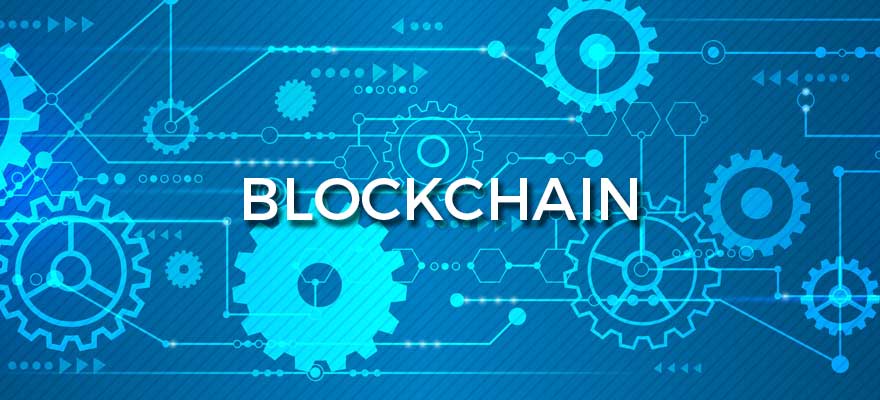Blockchain technology offers enormous benefits to the water industry, as Emma Weisbord explains, but other utilities and business sectors could also enjoy the same advantages

The High Level Panel on Water (HPLW) have put forward their Agenda for Water Action, and have highlighted the need for innovative technologies that can resolve the gaps in water data quality, quantity and access.
The HLPW propose that “an ambitious global framework is needed to enable public and private sector actors to cost-effectively access and use water and hydro-meteorological data.”
Chances are that you have heard some of the increasing buzz around blockchain technology.
The self-professed “most significant technological advance in modern history” is worth investigating more deeply.
Understanding blockchain basics can help inform us about applications for this technology across the industry for data verification, communication, exchanges, public participation, transparency, payments and more.
The basics
If you take away one piece of information, it should be this: “Blockchain is a decentralised record of information.”
The potential applications of blockchain for the water sector are vast and could help to achieve the HLPW’s recommendation of an accessible, open source and open access way to share water data between public and private sector actors.
Very simply put, blockchain technology is a public ledger of information collected through a network that sits on top of the internet.
The way in which this information is recorded is the exciting part, yielding a completely innovative way to document data online.
Blockchain allows people who don’t know each other to trust a shared record of information.
The information is recorded via consensus, using confirmation from several nodes (for example computers).
Imagine having several smart sensors monitoring water flow in a pipe. All devices record the same flow at a given time and record this data.
With the blockchain, once the agreement has been reached between these devices about the flow, this information is stored and cannot be disputed or changed.
Information received → information confirmed by several devices → information recorded → information then immutable.
Along with the consensus and immutability of the information recorded, what makes blockchain unique is that it is not centralised in one principal database or ledger.
Instead, many copies of the data are kept in different places on the network. Imagine printing multiple copies of a picture of yourself, tearing each copy into different pieces, and hiding them around your office.
This ensures that if one piece of the picture is damaged, lost or your colleague draws a moustache on one image, then enough other copies around the office exist to show that in fact – you have no moustache in that picture.
Similarly on the blockchain, if one piece of the record is changed without consensus from the rightful owners, there are multiple other copies of the record to prove that change false and obsolete.
One piece of information → multiple copies → multiple splits → multiple storage areas → changes need to be verified to be proven true
Blockchain works because it stores data as “blocks” of information that are linked with other similar blocks of information, forming a chain.
This chain of data blocks is part of why blockchain is considered to be so trustworthy – once the data is verified and recorded, it cannot be altered without also changing all the blocks around it.
Blockchain technology solved the challenge of having all devices on a network agree on validity when data is recorded, without allowing falsified or irrelevant inputs.
This is done through computer programs called consensus protocols and these systems ensure that data kept in these decentralised ledgers are accurate and secure.
Blockchain uses
Evidence-based decision-making requires data around the quality, quantity, allocation, risks and use of water.
Missing data, the high cost of maintaining information, and lack of access to data by important stakeholders all contribute to limiting our collective ability to achieve the high level aims of the SDGs and beyond.
A simple use of the blockchain would be for record keeping of water quality data along a catchment area.
In situations where data is collected by multiple groups like communities, scientists, enterprises, research institutions and environmental monitoring agencies, blockchain can be used to provide an immutable record of data collected by all parties inputting information into the same decentralised, distributed, open source and open access system.
As well, a blockchain ledger would allow for better tracking of updates to information for scientists that are benchmarking and tracking changes over time.
Blockchains are already being used to create transparent supply chains and this could be translated into the water sector for catchment to tap water quality mapping.
Whether a catchment has smart sensors that automatically upload the data to the blockchain or whether the data is uploaded by basin authorities or citizen scientists, a decentralised ledger allows public and private sector stakeholders to cost effectively access and utilise the information.
The HLPW recommends making evidence-based decisions about water, and cooperating to strengthen water data.
Integrating new technologies like blockchain will be necessary to achieve this ambitious global framework and establish a foundation for valuing water.
Relatively few of us understand the underlying specifics of the internet, can read binary or write code, even though we use computers and have digitised our lives.
It is important to note that the uptake of this technology is still in an exploratory phase and we are seeing in real time what possibilities are arising and how blockchain might yet be used.
As for all technologies, it should be viewed as a tool to achieve your goals, not as the goal in itself.
The business need is where to start.
In the same way that YouTube, blogs and social media have allowed for user generated content in a distributed, decentralised way, blockchain allows people to exchange assets without needing an intermediary.
The technological revolution has democratised content by giving individuals access to computation capacity and blockchain is simply the next phase of this.
This technology will lead to an extensive redefining of business processes within and between companies.
Businesses that opt to integrate blockchain and learn how this technology will alter and improve their operations will be heralded as the early adopters and reap the rewards in the industry.
With the water sector moving towards smart city integration, IoT, AI and the data economy, blockchain can provide a future-proof, integrated foundation for water utilities.
Three levels
The first level of blockchain is the storing of digital records in a controlled, secure, auditable and immutable way, not simply of transactions but also of digital representations of physical assets – for example a utility’s water quality data.
The second level is the exchange of digital assets where people can transfer ownership in real time without the need for banks, stock exchanges or payment processors – for example paying for a water bill.
The third level is the execution of smart contracts which are contracts written in code that include rules, conditions, expiry dates and any other necessary information that are embedded in a blockchain and automatically execute when the conditions are met.
Smart contracts allow businesses to reduce the time spent on paperwork, enforcing contracts and interacting with third parties.
The terms of the smart contract are recorded into the code and subsequently implemented automatically through the shared network which monitors compliance and verifies the outcomes without the need of a third party – for example, payments to contractors wherein a smart contract would be possible for contractors only if it determines the business has enough funds to pay for the requested services.
The main uses to date of blockchain technology have been in the cryptocurrency world – Bitcoin or second generation coins like Ethereum or Litecoin.
More recently, there has been a large uptake of blockchain technology outside of cryptocurrencies.
Based on how blockchain technology is designed, its use provides an opportunity to prove integrity of data and further develop trust in the data economy.
Of note is the potential to help utilities, cities and local authorities reduce the cost of operations through the use of blockchain – with the increasing pressure on utilities to do more with less, this technology can help reduce costs by removing intermediaries and the expensive transaction fees that these entail.
Equally, through the use of this tool that promotes transparency, we are likely to see an increase in citizen engagement.
As a way to improve efficiency, increase security and cut costs, it is a technology worth looking into more closely.
Efficiency is the most basic and relevant reason that many leading companies are embracing blockchain technology, especially in sectors where transactions and records are core to their business.
Sectors with heavy supply chains are investing in blockchain to create more transparency throughout their systems – Nestle, Walmart, Costco for example are working with IBM to develop global food chain supply safety. Why not the water sector?
B in B: Blockchain in business
There is a growing need for the water sector to address global water scarcity and water quality challenges through new approaches.
Water utilities face acute challenges at a local scale to meet the needs of growing urban populations.
Costly centralised systems might not be the way forward and if (or when) the predicted trend towards decentralisation and digitalisation becomes a reality, then blockchain technology will be fundamental to this new digital water world.
Some fascinating projects are coming about, facilitated through blockchain, that aim to build decentralised, resource-based economy networks.
Blockchain technology can help mediate payments between producer and consumer, as well as record exact exchanges of water resource assets and payments through new digital financial systems like cryptocurrencies.
This technology has the potential to decentralise and democratise the use and management of resources and put communities at the centre of sustainable development.
If this seems like a far way off, think back to the early 2000s – how many people had a mobile phone?
Cutting costs and speedy transactions
Even for our current centralised systems, blockchain can help to create more efficiencies and cut fees by providing a system through which transactions are quickly settled at a low cost.
Santander found that implementing blockchain into bank transactions dramatically cuts costs while allowing for relatively immediate payments, reducing the delays and fees incurred by traditional banking systems.
Utilities that automate their processes through blockchain and remove the intermediaries that distribute payments and process transactions would benefit from improving speed and efficiency of payments for customers as well as reduce their own operating costs and risks of errors.
By providing a secure, immutable system, blockchain could help to streamline transactions for water utilities.
Know your customer & engage them
By providing a common record of information relating to your customers, blockchain allows companies to immediately access information and updates relating to client records – be it changes in address, payments, water usage – this could all be stored internally and securely to improve customer service.
Identification blockchains would enable utilities to securely and efficiently manage digital identities and private information while increasing transparency around their use of data and compliance with regulations.
As well, with regards to public perception, water companies could benefit from incorporating blockchain technology to ensure more transparency in their operations.
Through a public ledger of information, water companies would be accountable to their customers by storing their expenditures, water quality data, and pricing in a publicly accessible blockchain system.
Audits
On the accounting side, companies that are required to disclose their financial information can keep this data on an immutable public ledger that is timestamped and thus decrease the need for manual auditing to determine authenticity.
This level of transparency can be applied across the water sector to reduce fraud and corruption.
In water utilities, immutable and secure blockchain systems can help overburdened organisations save countless hours of manual work.
For water utilities that are incorporating an ever-expanding menu of digital water technologies, secure blockchain systems diminish risks of hacking, data destruction and improve transparency.
The shift of water utilities towards digital water technologies brings about exciting and paradigm shifting opportunities.
The uptake of sensors and big data usage by utilities require data reliability, accessibility and analytics which can partly be managed via blockchain systems.
Digitising asset management can be made more reliable with this distributed ledger technology.
Finally, as a way to ensure customer engagement and satisfaction, transparency and cost-effectiveness are crucial to building strong relationships with clients.
Open data systems can help set up a basis for trustworthy utilities and blockchain can increase the speed at which information is available to stakeholders.
The most successful water utilities will be those where the underlying blockchain systems are invisible to users in seamless, user friendly ways and integrated across digital water technologies.
Blockchain is the final drop in the wave of digital water disruption.
The technology enables businesses to remove intermediaries that have long been embedded in the cost and resourcing of operations.
This will fundamentally alter the way we interact with transactions and the way we manage and operate access to assets like water.
It is easy to get caught up in the latest techno craze, and blockchain requires a mindshift of mass scale and a rethinking of our long-term visions.
There are obviously major challenges associated with this new tech, namely acceptability, scalability and proof of concept in multiple industries.
The water sector as a whole must work together to envision how to make the most of the benefits that blockchain can provide and how a shift to decentralised systems could help achieve our goal of a water wise world.
This article first appeared in the Source, the quarterly magazine of the International Water Association




